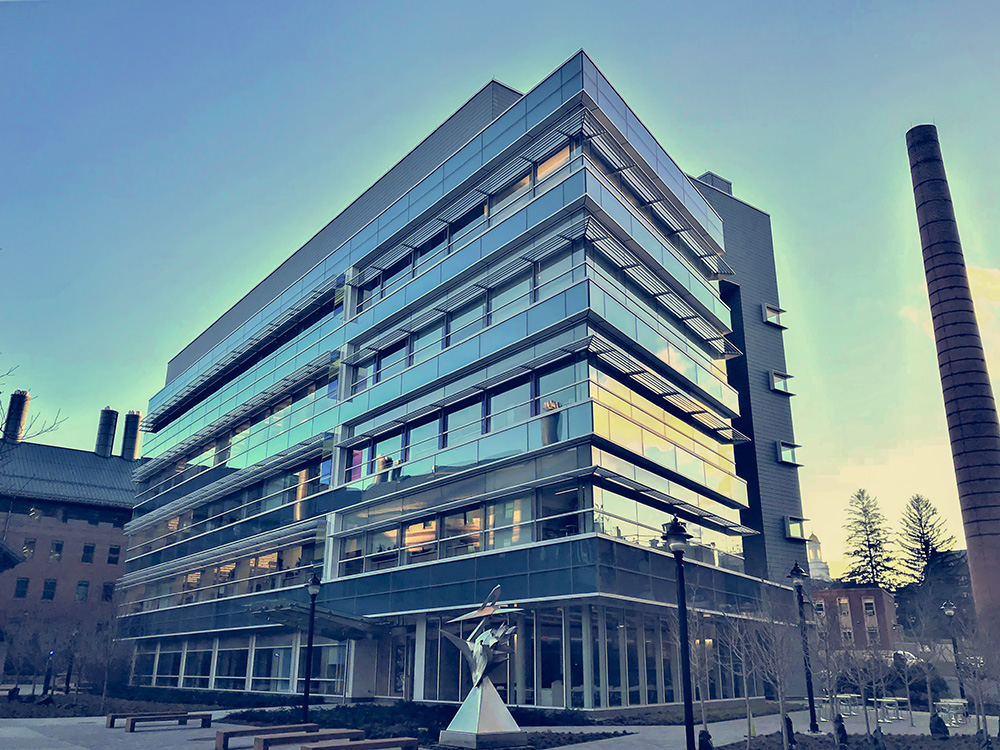Building Connecticut’s Economic Future Through STEM
Launched in 2014, Next Generation Connecticut is a state initiative to greatly expand educational opportunities, research, and innovation in the science, technology, engineering, and math (STEM) disciplines at UConn over the span of a decade. The shared goal of this initiative was to leverage the strength and resources of this University to build Connecticut’s future workforce, create jobs, and invigorate the State’s economy. The cornerstone of this effort is a major increase in the University’s enrollment, the expansion of our faculty, and the development of new and existing facilities to accommodate enhanced STEM research and teaching. It also supports the academic missions and the expansion of critical programs at UConn’s Hartford and Stamford campuses.
The Vision
This initiative represents one of the most ambitious state investments in economic development, higher education and research in the nation. With Next Generation Connecticut, key, targeted strategic investments in facilities, faculty, and students established UConn as a vital STEM institution, fueling Connecticut’s economy with new technologies, highly skilled graduates, new companies, patents, licenses, and high-wage STEM jobs. Goals of this ambitious 10-year plan include:
- Hiring new research and teaching faculty;
- Increasing enrollment of undergraduate students at the Storrs and Stamford campuses;
- Building research facilities to house materials science, physics, biology, engineering, cognitive science, genomics and related disciplines;
- Constructing new teaching laboratories;
- Creating a premier STEM Honors program to attract increasing numbers of high achieving undergraduates;
- Upgrading aging infrastructure to accommodate new faculty and students;
- Expanding degree programs and providing student housing in Stamford;
- Relocating the Greater Hartford Campus to downtown Hartford; and
- Better integrating the research activities of the Storrs and regional campuses with the UConn Health campus.
Historical Context
Connecticut has historically been known as the birthplace of invention and innovation. Connecticut inventors created the cotton gin, anesthesia, the first submarine, helicopter, color television, the portable typewriter, and a range of industrial technologies. The technical proficiency that contributed to Connecticut’s economy has declined dramatically. Connecticut’s long-term economic competitiveness can be re-invigorated with key investments for pioneering R&D and vital educational programs in the STEM disciplines. Next Generation Connecticut has expanded critical STEM activities at UConn and acted as a driver of innovation, enhancing job creation and economic growth, allowing the State of Connecticut and its workforce to flourish.
Return on Investment

Investment Today Yields Short- and Long-Term Growth
Next Generation Connecticut is creating construction jobs and, more significantly, will produce sustainable long-term employment in high technology fields. This initiative will also leverage and maximize the State of Connecticut’s related investments in Bioscience Connecticut, Jackson Laboratory for Genomic Medicine, Aerospace Reinvestment Act and the Advanced Manufacturing Fund, among others. By 2024, Next Generation Connecticut will yield over 2,000 new permanent jobs in prominent fields related to research and approximately 30,000 construction jobs.
Further investment in STEM will result in dramatic increases in both STEM research and STEM graduates, in turn producing innovations and inventions that will directly contribute to sustainable economic growth for Connecticut.
Other states have made similar investments in STEM research, creating jobs and increasing their economies. In each state, positive outcomes have accrued and jobs have been created with strong ROI. It is now our time and the University is prepared to join the ranks of the top STEM institutions and states in the country.
A Record of Success: Return on Previous Investments
The UConn 2000 investments are the major contributors to UConn’s growing reputation for academic excellence and its emergence as a leader in higher education, drawing top students from Connecticut and the rest of the nation. UConn’s rise during the past 16 years has been astounding, the result of strategic State support that was wisely invested in both facilities and infrastructure. Beginning in 1996, UConn’s
- Undergraduate enrollment increased by 54 percent;
- Undergraduate STEM enrollment increased by 115 percent;
- Average freshman SAT scores increased by 120 points to 1233;
- Undergraduate degrees awarded per year increased by 74 percent;
- Graduate/professional degrees awarded per year increased by 35 percent.
Record numbers of applications from high-caliber students and support for student success resulted in UConn’s increase in national rankings from #38 to #21 among public universities in 2012, according to U.S. News & World Report. UConn currently enrolls 13 percent of Connecticut’s high school seniors and our fall 2012 class, once again, included the largest, most diverse, and most academically talented students ever admitted.
This further investment in STEM will result in dramatic increases in both STEM research and STEM graduates, in turn producing innovations and inventions that will directly contribute to sustainable economic growth for Connecticut.
Development of the New Campus Master Plan and Capital Plan
In January 2014, the University embarked on a master planning process to define a 20-year vision for the campus and meet the goals of NGC. It is imperative that the siting of new buildings and facilities be planned in a thoughtful, cost-effective, and sustainable manner.
The Master Plan must also support the University’s new Academic Plan. The ‘existing condition’ data collection phase of the Master Plan is complete, and analysis is in process for utilities, transportation, environmental, landscape, and space planning including research, teaching, residential and administrative space. Benchmark space planning metrics for peer and aspirant institutions have been gathered and are being compared to UConn’s existing data to inform the direction for new and renovated buildings. Opportunities for improvement have been identified with input from faculty, students and staff and will be organized for review in early Fall 2014. The final draft of the Master Plan was finalized by the UConn Board of Trustees in early Spring 2015.


